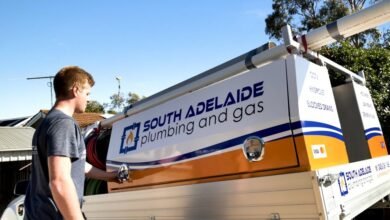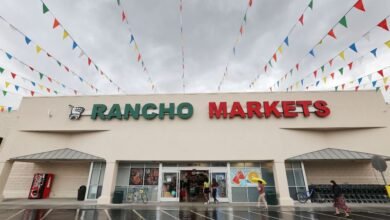Why Choose a Gas Fireplace for Your Cary, NC Home

When the temperatures dip in Cary, NC, the comfort of a cozy, warm home becomes a priority, that’s when you need a fireplace in your home. However, the cost and maintenance of traditional wood-burning fireplaces can be a deterrent. In this scenario, enter the gas fireplace, a modern solution that offers warmth and ease without the mess.
Many homeowners are unaware of gas fireplaces’ efficiency and cost-effectiveness, including their ability to heat rooms quickly with less environmental impact. By choosing a gas fireplace Cary NC, you not only enhance the aesthetic appeal of your home but also enjoy a reliable and convenient heat source. This makes gas fireplaces an excellent choice for your Cary home, which combines comfort, convenience, and cost savings in one elegant package.
Types of Gas Fireplaces
Insert Gas Fireplaces
Insert gas fireplaces are designed to fit into existing wood-burning fireplace structures, which makes them an ideal choice for renovation projects. They are highly efficient, utilizing the existing chimney to vent and often include features such as fans to help distribute heat more evenly. This type of fireplace is perfect for those looking to upgrade their old fireplace with minimal structural changes and enjoy a cleaner and more efficient source of warmth.
Built-In Gas Fireplaces
Built-in gas fireplaces are installed during the construction phase of a home or major renovations. They require no existing fireplace or chimney, as they can be vented through an external wall. These fireplaces can be customized to fit the specific design and aesthetic of your home, offering a sleek, modern look with customizable options like varying flame patterns and decorative panels.
Freestanding Gas Fireplaces
Freestanding gas fireplaces offer the most versatility in placement and are a great standalone feature in any room. These units can be placed anywhere venting permits and often serve as a decorative centerpiece. Their portability and minimal installation requirements make them a popular choice for adding warmth and charm without the constraints of built-in units.
Gas Fireplace Logs
Gas fireplace logs are designed to mimic the look of real wood logs burning and are an excellent choice for converting a traditional wood fireplace into a gas model without altering the existing structure. They come in vented and vent-free varieties, that provide flexibility in installation and use. This option allows homeowners to maintain the traditional aesthetics of a wood-burning fireplace while benefiting from the convenience and cleanliness of gas.
Wall-Mounted Gas Fireplaces
Wall-mounted gas fireplaces add a touch of modern elegance to any space, with designs ranging from traditional to contemporary. These units are mounted directly on the wall and can be vented horizontally, making them suitable for apartments or homes without a lot of free space. They are particularly popular for their space-saving design and ability to fit into smaller living areas. These fireplaces provide warmth without the footprint of larger units.
Direct Vent Gas Fireplaces
These fireplaces are highly efficient and safe, as they do not use indoor air for combustion. They are sealed from the room and vent directly to the outside, drawing air in through a dual vent system. This design minimizes heat loss and maximizes energy efficiency, which makes it an ideal choice for those looking to reduce their heating costs while guaranteeing a safe and comfortable indoor environment.
Vent-Free Gas Fireplaces
This type of gas fireplace is the essence of installation flexibility and efficiency. They do not require any venting, which means they can be installed almost anywhere within regulatory guidelines. This type of fireplace is designed to burn cleanly and efficiently, with nearly 100% of the heat produced being distributed directly into the room, providing maximum warmth with minimal waste.
Gas Fireplace Components
Gas Burner
The gas burner is the heart of a gas fireplace, where the gas is combusted to produce flames. It is typically made of durable materials that can withstand high temperatures and is designed to efficiently mix air and gas to create a consistent and controlled flame. The design of the burner affects the appearance and heat distribution of the flames, making it a crucial component for both functionality and aesthetic appeal.
Venting System
The venting system is essential for removing combustion byproducts from the indoor environment to the outdoors, guaranteeing the air quality remains safe. Depending on the type of gas fireplace, the venting can be direct (through an outer wall) or through an existing chimney. Proper installation and maintenance of the venting system are vital for the safe operation of the fireplace.
Ignition System
Gas fireplaces come with either a manual or electronic ignition system to light the gas burner. Manual systems typically use a pilot light that stays lit and ignites the gas when the fireplace is turned on, while electronic systems use a spark to ignite the gas each time it’s turned on, which can help save on gas usage and improve safety.
Thermocouple and Thermopile
The thermocouple and thermopile are safety devices that detect the presence of the pilot flame. The thermocouple keeps the gas valve open when it detects a flame, preventing gas from flowing when the fireplace is not in use. The thermopile, on the other hand, generates electricity from the heat of the pilot flame to operate the gas valve and other controls in millivolt fireplace systems.
Control Panel
The control panel allows for the operation and adjustment of the gas fireplace. It may include switches or knobs to control the flame height, temperature, and sometimes the blower fan speed. More advanced fireplaces might include remote controls or smart home integrations that allow for convenient control from afar.
Heat Exchanger
A heat exchanger is used in some gas fireplaces to increase heating efficiency. It captures heat from the gas burner before it exits through the venting system and then circulates this heat into the room. This component is essential for maximizing the heat output and energy efficiency of the fireplace.
Ceramic Logs or Fire Glass
These components serve both an aesthetic and practical purpose in a gas fireplace. Ceramic logs are designed to look like real wood and can be arranged to create a natural-looking fire. Fire glass, on the other hand, provides a more modern appearance and comes in various colors to complement the decor. Both materials help to distribute heat more evenly and enhance the visual appeal of the flames.
Safety Screen
Safety screens are vital to prevent accidental contact with the hot glass front of a gas fireplace. They provide a barrier that helps protect children and pets from burns while still allowing a clear view of the flames. Safety screens are especially important for vent-free gas fireplaces, as their glass fronts can become extremely hot during operation.
How Gas Fireplaces Work?
Fuel Supply
A gas fireplace operates by using natural gas or propane as its fuel source. This fuel is supplied through a dedicated gas line that is connected directly to the fireplace. The consistent fuel supply ensures that the fireplace can be turned on or off with a switch, remote control, or even a smartphone app, providing convenience and ease of use.
Ignition System
The ignition system in a gas fireplace can be either a standing pilot light that burns continuously or an electronic ignition that lights the gas only when the fireplace is activated. The electronic ignition is more energy-efficient as it does not consume gas continuously, whereas the pilot light system offers reliability, especially in cases of power outages.
Combustion
Once the gas is ignited, it combusts inside the fireplace’s combustion chamber, leading to heat creation. This process is safely contained within the firebox, which is designed to withstand high temperatures and prevent any flames from escaping into the living space.
Heat Exchange
The heat generated from the combustion of gas is transferred to the room through a heat exchanger. This component increases the efficiency of the fireplace by capturing heat from the combustion gases before they are vented outside. The warm air is then circulated back into the room, often assisted by fans to spread the warmth more evenly.
Venting
Proper venting is key for safely removing the byproducts of combustion, such as carbon monoxide and moisture, from the indoor environment. Gas fireplaces can be vented through a chimney, directly through an external wall using a direct vent, or by using a vent-free system that is designed to operate without external venting.
Controls and Safety Features
Modern gas fireplaces include various controls for adjusting the flame size, heat output, and sometimes even the flame color. Safety features typically include automatic shut-offs to prevent gas leaks, oxygen depletion sensors to monitor air quality, and thermal overload protectors to prevent overheating.
Reasons to Choose a Gas Fireplace
Convenience
Gas fireplaces offer unmatched convenience compared to traditional wood-burning options. They ignite with the flip of a switch, which requires no physical wood, and eliminates the need for ash cleanup and chimney sweeping. This ease of use appeals to those seeking a hassle-free heating solution.
Energy Efficiency
These fireplaces are highly efficient as they convert a significant portion of the gas they consume into usable heat, which means less energy is wasted. This efficiency can translate into lower heating bills, especially when used to heat individual rooms rather than relying solely on central heating.
Consistent Heat Supply
Unlike wood fireplaces that can fluctuate in temperature as wood burns down, gas fireplaces provide a steady and consistent heat output. This consistency guarantees that your room remains at a comfortable temperature without the need for constant adjustments.
Low Maintenance
Without the need to handle wood logs, ashes, and soot, gas fireplaces are relatively low maintenance. They don’t produce ash or soot, which means less cleaning is required, and there’s no need to worry about chimney blockages from creosote buildup.
Eco-Friendly
Gas fireplaces emit fewer pollutants than wood-burning units. This makes them a more environmentally friendly option, as they contribute less to indoor and outdoor air pollution. Furthermore, natural gas is a cleaner-burning fuel, which helps in reducing your carbon footprint.
Versatility in Design
This type of fireplace comes in a variety of styles and designs that can fit any home aesthetic, from traditional to contemporary. They can be installed almost anywhere in the home where a gas line and venting can be run, which offers flexibility in design and placement that wood fireplaces cannot match.
Safe Operation
Modern gas fireplaces are equipped with safety features such as automatic shut-offs, oxygen depletion sensors, and sealed combustion units that reduce the risk of carbon monoxide buildup. These features make gas fireplaces safer to operate, offering peace of mind for homeowners.
Immediate Heat
Gas fireplaces provide heat almost immediately after being turned on, unlike wood fireplaces which need time to get the fire going and to heat up. This instant heating feature makes them ideal for quickly warming up a space, making them perfect for sudden cold snaps.
Resale Value
Installing a gas fireplace can enhance the resale value of your home. They are a desirable feature for many homebuyers, who view them as a luxurious and practical addition to a property. This can make your home more attractive on the market and potentially increase its sale price.
Tips to Choose a Gas Fireplace
- Determine where you want to install the gas fireplace and consider the type of venting system that suits your home’s layout. Direct vent fireplaces are suitable for tightly sealed homes, while vent-free models are good for rooms with adequate ventilation.
- Also, look for a gas fireplace with a high Annual Fuel Utilization Efficiency (AFUE) rating. Higher efficiency means more of the fuel is converted into usable heat, which can help lower your energy bills.
- Make sure the output of the fireplace matches the size of the room where it will be installed. A model that’s too powerful can overheat the space, while one that’s too small won’t provide adequate warmth.
- Gas fireplaces come in various styles, from traditional to contemporary. Choose one that complements your home’s existing decor and fits your aesthetic preferences.
- Some gas fireplaces offer remote controls, programmable thermostats, and variable-speed fans, which enhance ease of use and control over the unit.
- Pick a model with built-in safety features like automatic shut-off, oxygen depletion sensors, and protective screens to guarantee safe operation.
- Understand the installation demands of your chosen model. Some might need extensive renovation, while others can be more easily integrated into existing spaces.
- Besides the initial purchase and installation costs, consider the ongoing operation and maintenance expenses. Also, choosing a model with lower maintenance needs can save money over time.
- Consult with HVAC professionals or a licensed installer to get recommendations tailored to your specific needs and to ensure the fireplace is installed according to local building codes.
Conclusion
Choosing a gas fireplace for your Cary, NC home offers numerous advantages that make it a worthwhile investment for enhancing both comfort and ambiance. Not only does a gas fireplace provide reliable and efficient heating, but it also adds a touch of elegance to any room with its aesthetic appeal. With minimal maintenance and no need for stocking wood, a gas fireplace certifies a clean and hassle-free experience.
Also, its easy operation, from quick ignition to adjustable heat settings, allows for precise temperature control, making your home cozy exactly when you need it. Moreover, the installation of a gas fireplace can increase your home’s value, which makes it a smart choice for those looking to improve their living space while also investing in their property’s future marketability.



